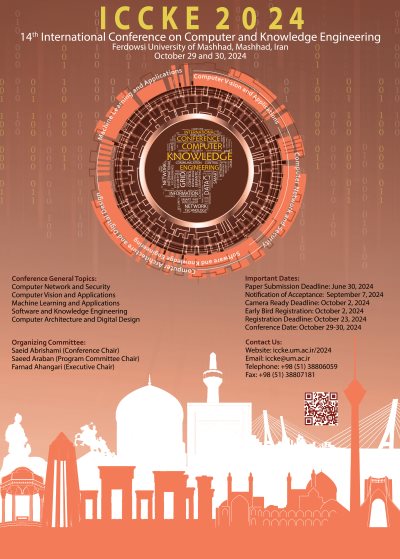0% Complete

Authors :
Keywords :
Abstract :
List of archived papers
Mohammad Nikbakht - Mehdi Teimouri
Mohammad Shahraeini - Shahla Khormali - Ahad Alvandi
Atieh Mokhtari - Mohammad Taheri
Moein Sartakhti.salimi@gmail.com - Mohammad Javad Maleki Kahaki - Ahmad Yoosofan - Seyyed Vahid Moravvej
Seyed Hesamoddin Hosseini - Amene Vatanparast - Amir Hossein Taherinia
Kimia Soroush - Mohsen Raji - Behnam Ghavami
Ali Soltani Nezhad - Hojat Asgarian Dehkordi - Seyed Sajad Ashrafi - Shahriar Baradaran Shokouhi
Narges Semiromizadeh - Omid Nejati Manzari - Shahriar B. Shokouhi - Sattar Mirzakuchaki
Mahsa Zahedi - Mohammad Sediq Abazari Bozhgani - Abdorreza Savadi
Fatemeh Fouladi - Ali Rostami - Hedieh Sajedi




